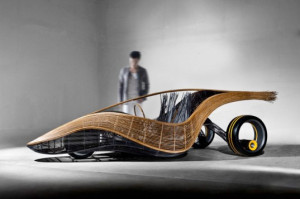GM shows off Terrain SUV with noise cancellation and said silence equals fuel efficiency.This new high-end audio technology helps terrain get to MPGs and noise cancellation system also helps give GMX crossover one of the quietest interiors………
The technology that makes high-end noise-cancelling headphones coveted by frequent flyers and iPod audiophiles is helping GMC Terrain owners save gas.Active noise cancellation does double duty on Terrain. The technology enables the crossover to deliver a segment-leading EPA-rated 32 mpg in highway driving while ensconcing the driver in one of the quietest interiors in its segment. On the highway, Terrain easily tops the 28-mpg rating of Honda CR-V, Toyota RAV4 and Ford Escape.When GM engineers set out to deliver segment-leading fuel economy on Terrain they chose to lower the 6-speed transmission’s gear shift points to enable the Ecotec 2.4L four-cylinder engine to run at lower rpm torque.
In this Eco mode which the driver can activate with a click of a button on the console and the torque converter clutch engages at lower engine speeds to help save gas. While the engineering action improved fuel efficiency by up to one mpg, it also created an objectionable low-end frequency boom. To counteract that boom the engineers turned to active noise cancellation technology.Terrain’s noise cancellation system relies on two microphones embedded in the headliner to detect the hum and prompt an onboard frequency generator to create counteracting sound waves through the audio system’s speakers and sub-woofer. The system also reduces higher rpm engine noise at highway cruising speeds to help keep the vehicle interior quiet.
The use of direct injection and variable valve timing also help maximize Terrain‘s fuel efficiency. In a direct injection engine, fuel is fed straight to the engine’s combustion chamber, allowing it to burn more evenly and thoroughly. For the driver, that can translate to better mileage and greater power to the wheels. Variable valve timing eliminates the compromise inherent in conventional fixed valve timing and allows a previously unattainable mix of low-rpm torque even torque delivery over a broad range of engine speeds and free-breathing, high-rpm horsepower.Terrain uses electric power steering which does not require engine power to operate like traditional hydraulic power steering and draws electric power only as needed which improves efficiency and extends component life. Electric power steering systems are relatively compact, help lower vehicle weight and reduce CO2 emissions by approximately 3.5 percent.
GM engineers also worked closely with tire suppliers to develop low-rolling resistance tires which typically require less effort to roll forward and minimize wasted energy. Terrain‘s tire unlike some low drag tires was designed to provide good grip on snow and wet pavement while improving fuel economy by more than 1 mpg.Program engineers improved Terrain‘s highway fuel economy up to one mpg by reducing aerodynamic drag through the refinement of the front air dam, rocker panel, roof line, outside rear view mirrors and front bumper. By working on clay models in GM‘s state-of-the-art wind tunnel, the engineers were able to reduce its wind noise to ensure quiet driving.Engineers also minimized the Terrain‘s curb weight by using lightweight aluminum chassis components and noise reduction materials that weigh less than traditional materials.


